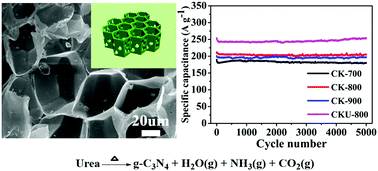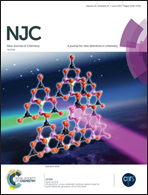Porous carbon derived from Ailanthus altissima with unique honeycomb-like microstructure for high-performance supercapacitors†
Abstract
Biomass-derived porous activated carbon (AC) with high surface area of up to 1776.9 m2 g−1 was prepared by KOH and urea activation of Ailanthus altissima stems with unique honeycomb-like microstructure at 800 °C. As an electrode material for supercapacitors, the AC samples exhibited a remarkably large capacitance of 300.6 F g−1 at 0.5 A g−1 in 1 M H2SO4 and retained up to 213.4 F g−1 even at a current density of 20 A g−1. It is worth noting that no obvious capacitance loss was observed over 5000 charge/discharge cycles, clearly demonstrating the robust long-term stability. The excellent performance of the special carbon electrode can be attributed to the inherent honeycomb-like porous microstructure of Ailanthus altissima stems, which can offer more surfaces for activation by KOH to generate a more microporous network. This work provides a promising strategy to take full advantage of the unique microstructure of raw materials from nature via simple technologies to achieve sustainable energy development.



 Please wait while we load your content...
Please wait while we load your content...